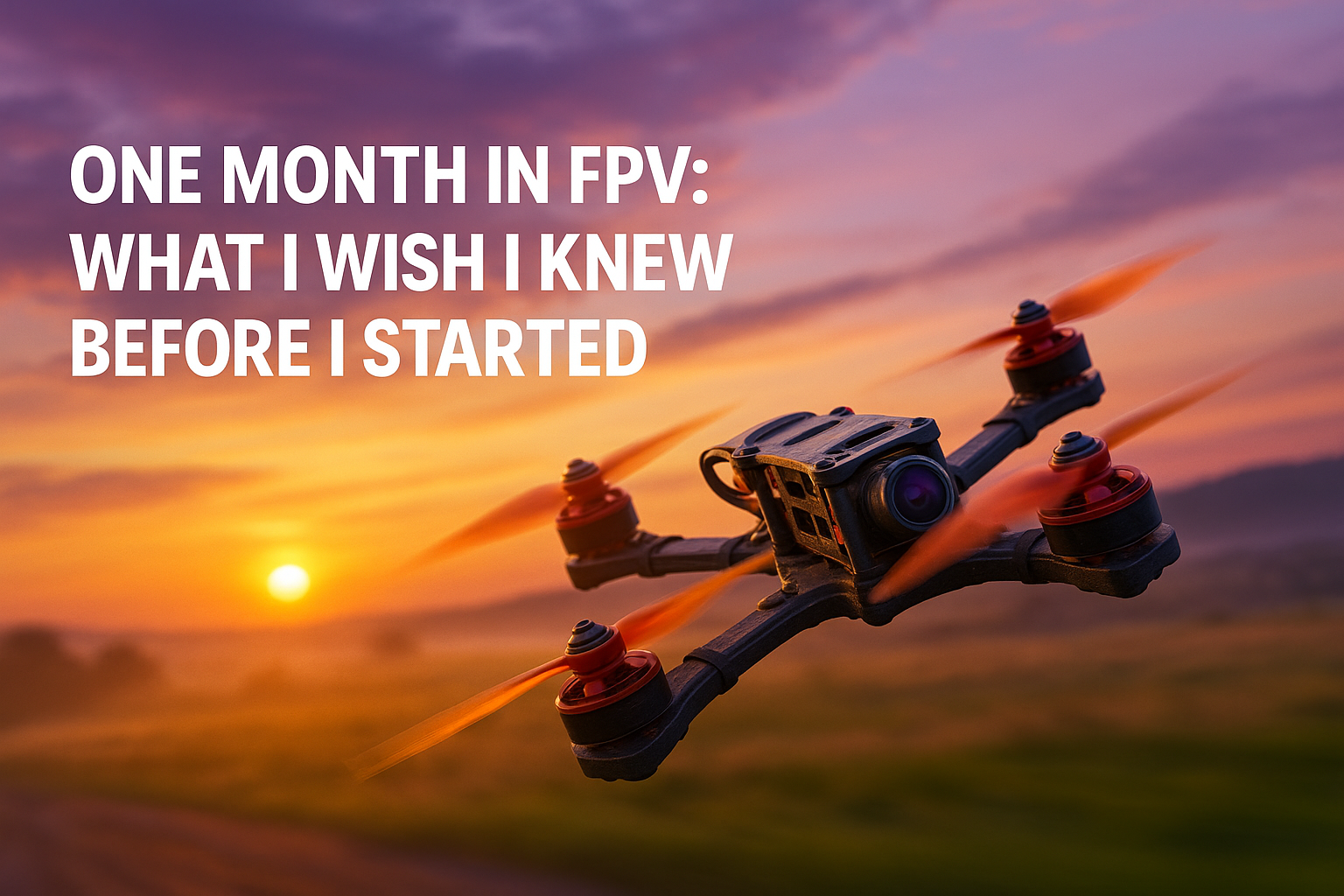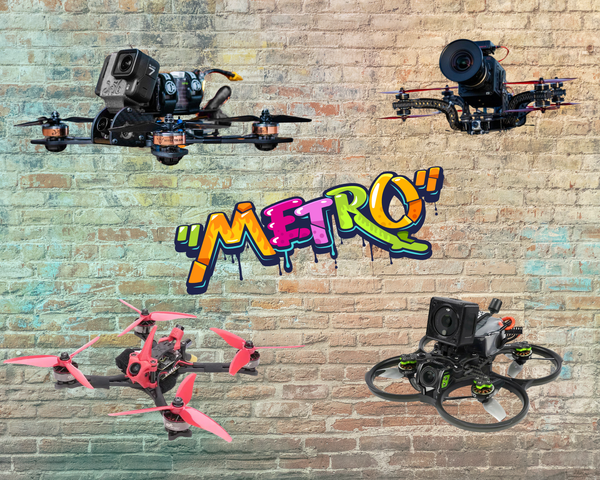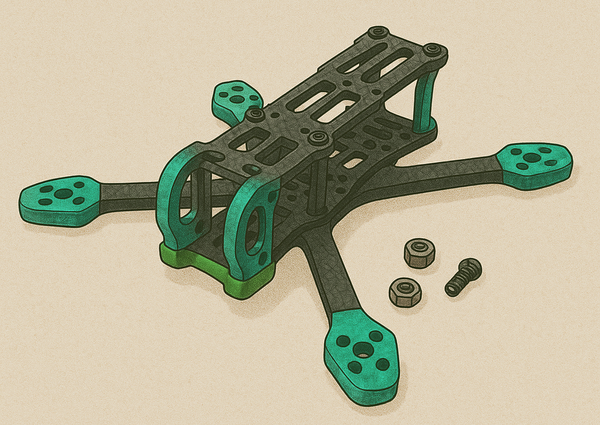One Month in FPV: What I Wish I Knew Before I Started


Assumptions vs. Reality: FPV Isn’t Too Hard After All
When I first got interested in FPV (First Person View) drone flying, I was intimidated. I had this notion that FPV was only for hardcore tech wizards – I imagined endless manual programming, complex tuning, and a learning curve like a sheer cliff. The truth? FPV does have a learning curve, but it’s not as impossible as it looks. With a healthy dose of curiosity, a bit of soldering confidence, and the wealth of beginner-friendly guides out there, I found the journey manageable and rewarding. To my surprise, much of the setup was follow-the-instructions rather than pure rocket science. You don’t need an engineering degree to bind a receiver or configure a flight controller these days – if you can follow tutorials and aren’t afraid to tinker, you’re already set. In fact, I quickly discovered that the community has made FPV far more accessible now than it was years ago. As long as you take it step by step and aren’t afraid to Google things, you’ll progress faster than you expect.
What made the difference for me was leveraging the right resources. I leaned heavily on the wisdom of seasoned FPV pilots shared online – which leads me to the next point.
Lifesavers: YouTube Mentors and FPV Guides
Early on, I stumbled upon two names that every FPV newbie eventually hears: Joshua Bardwell and Oscar Liang. These guys became my virtual mentors. Bardwell’s YouTube videos and Oscar’s written articles were absolute gold for getting me through tricky setup steps and confusing concepts. For example, when I was wrestling with how to configure my transmitter and BetaFlight settings, I watched one of Bardwell’s tutorials and it cleared everything up. (In fact, one Reddit user put it perfectly: “If not for Bardwell... I probably would have given up trying to set up my controller.” (1 month into fpv. I love this shit. : r/fpv) – that’s exactly how I felt!). Joshua Bardwell’s YouTube channel is like having an experienced friend on call; whenever I got stuck, I’d search his videos and almost always find an explanation or fix.
On the other hand, Oscar Liang’s blog became my go-to reference manual. Oscar has detailed write-ups on everything from soldering basics to complete build guides. One of Oscar’s articles was actually the first thing I read when I decided to dive into FPV, and it set me on the right path. His Ultimate Beginner’s Guide and many how-to posts answered questions I didn’t even know I had. It was reassuring to know that if I wondered “What’s the best way to start flying?” or “Should I build or buy my first drone?”, there was likely an Oscar Liang article covering exactly that topic. Together, Bardwell and Oscar made the intimidating parts of FPV feel achievable. They taught me that thousands of people have learned this hobby and I can too.
Beyond those two, the FPV community in general has been amazing. Subreddits like r/fpv are filled with beginners and experts mingling – people are quick to help if you ask a question. Don’t underestimate how encouraging it is to know others have had the same problems (and solved them). You’re never really alone in the hobby; the collective knowledge online is huge. Leverage it!
Gear Up, but Don’t Go Overboard
I’ll admit – when I started, I almost fell into the trap of buying a ton of gear I didn’t need. It’s super tempting: you watch all these videos, see cool drones and gadgets, and before you know it your shopping cart has four different quadcopters, three sets of goggles, and enough spare parts to build a spaceship. Resist that urge! One of the biggest lessons from my first month is to start with just the essentials and avoid “gear envy” until you get some experience.
Here’s what I found to be the essential starter setup (and nothing more):
- A Good Radio Transmitter (Controller) – This is your main tool for flying. I chose the RadioMaster TX16S transmitter with Hall-effect AGO1 gimbals (those are the super-smooth, upgraded sticks). The TX16S is a fantastic full-featured radio that can grow with you. However, in hindsight, I might have gone with the smaller RadioMaster Boxer radio instead – it’s got almost all the same functionality in a more compact, portable form factor. Many pilots actually prefer the Boxer for its comfortable size and weight, noting that it’s “more comfortable, lighter and portable” than the TX16S. The takeaway: get a reliable radio, but it doesn’t have to be the biggest or fanciest; it has to feel comfortable in your hands and be something you can practice with a lot.
- An FPV Simulator – Before you even think about buying a drone, invest $20 (or sometimes even free) in a good computer simulator like Liftoff or Velocidrone. I spent hours flying in the simulator, which saved me from destroying a real quad on day one. In the sim, you can crash as much as you want and it only hurts your pride, not your wallet. It’s a risk-free way to build muscle memory on the sticks. I treated the simulator like a video game training mode – and trust me, it makes a world of difference. (Common wisdom suggests putting in at least 10 hours in acro mode on the sim before flying for real, and I understand why!). This step dramatically shortened the “oh no, I can’t control this thing” phase of learning.
- A Basic FPV Drone (Quadcopter) – Once I felt decent in the simulator, I got my first real quad. And here’s something I wish I knew earlier: you don’t have to build your first drone from scratch! I was under the impression that “real FPV pilots” always build their own. While building is a great learning experience, it’s perfectly fine (even smart) to start with a bind-and-fly (BNF) or ready-to-fly (RTF) drone. These come pre-built – you just bind them to your radio (and maybe tweak a few settings) and go fly. I opted for a simple 5-inch freestyle quad that came pre-assembled. There are also tiny whoop drones or micro quads that are great for beginners. Starting with a pre-built quad let me focus on flying first. I could worry about the fine technical details of building/tuning later as I grew more comfortable. The key is to get something durable enough to survive some crashes but not so expensive that you’re terrified to fly it.
- FPV Goggles – One of the most defining parts of flying FPV is the immersive experience, and that all comes down to your goggles — the headset that shows you exactly what the drone’s camera sees in real time. Unlike line-of-sight drone flying, FPV puts you in the cockpit, and the goggles are your view into that world. After considering a few options, I decided to go all in and picked up the DJI Goggles 2. Before I pulled the trigger on a digital setup, I seriously considered starting with analog FPV goggles — the OG way most FPV pilots flew (and many still do). Analog goggles, like those from Fat Shark, Skyzone, or Orqa, work by receiving analog video signals from the drone's VTX (video transmitter). The advantages? Analog goggles are usually much cheaper, have a broader ecosystem, and are great if you’re flying micros or older builds that don’t support digital systems. That said, the video quality is nowhere near what you get with DJI’s digital setup. With analog, the footage looks more like an old-school VHS tape — lower resolution, some static interference, and signal breakup if you fly behind trees or buildings. But many freestyle pilots still prefer analog for its lighter setup, lower cost, and real-time responsiveness. Plus, it’s way easier to repair or swap out components without being locked into a closed ecosystem.
And of course, some batteries, a charger, and basic tools (soldering iron, screwdriver set) rounded out the kit. But those four items above were the main pieces.
Crucial tip: Don’t go too cheap on the critical gear, but also don’t over-buy. What do I mean? For example, a common mistake is buying multiple ultra-cheap drones or radios thinking you’re saving money, but those often break quickly or perform poorly – then you end up upgrading and spending more in total than if you’d bought a decent mid-range option to begin with. There’s a saying: “buy once, cry once.” It holds true in FPV. I’ve heard so many stories (and nearly became one) of beginners who buy a bargain-bin transmitter, only to replace it within a month, or who get three cheap micro quads that all fail, and then finally buy a reliable one. The costs add up! It’s fine to start budget-conscious (we all have budgets), just make sure the gear you do buy is known to be good enough to learn on. For instance, I chose the TX16S radio because it was highly recommended as quality and wouldn’t need replacement immediately – it wasn’t the cheapest radio on the market, but it prevented me from getting radio #2 a month later. As one blog aptly put it, chasing ultra-cheap deals can lead to a “cycle of failed components and hard-to-find replacements” (Mastering FPV on a Budget: How to Dodge Common Financial Mistakes), which ultimately means more headache and expense.
So, step by step: get what you truly need to start flying. Ignore the noise of every cool new gadget – you can always expand your collection later as you figure out your preferences. In my first month, all I needed was a solid radio, a sim, one quad, one pair of goggles, and a few batteries. That setup got me in the air and kept me there.
Mindset: Fly, Fail, and Have Fun
Lastly, let’s talk about the mental game. FPV can feel like a rabbit hole – there’s always more to learn, more to tweak, and yes, more shiny new gear to covet. In my first month I had moments where I got obsessed with tuning PIDs or spent hours reading about advanced maneuvers instead of actually flying. My advice to my past self (and anyone starting out) is: keep a balanced mindset. Remember why you got into FPV – likely because it looked fun and exciting! So make sure you’re actually having fun and getting that excitement. It’s easy to fall into analysis paralysis, where you think “I need to perfect my knowledge or wait for the perfect equipment before I really fly.” But the truth is, experience is the best teacher in this hobby. You learn more from one battery pack flown (and even crashed) than from ten hours of reading forums about flight theory.
Embrace the fact that you will mess up, and that’s okay. On my second day with a real quad, I managed to get it stuck in a tree and later slammed into a wall. I felt bad – but those mishaps taught me more than any successful flight. Each failure pointed out what I needed to adjust, and I improved because of them. FPV is a skill learned through trial and error. So, don’t be too hard on yourself when (not if) you crash or when something doesn’t work on the first try. Every pilot you admire has a garage full of broken drone parts and a head full of “learning opportunity” stories! I certainly do, and I’m just one month in.
Also, fly for yourself. It’s great to watch YouTube pros and aspire to do crazy acrobatics, but in the beginning just enjoy simple things. The first time I completed a smooth circuit around an open field, I literally whooped with joy – that feeling was incredible. You don’t need to power-loop a tower or dive a skyscraper in your first weeks to get the thrill. Take it step by step: maybe today you practice takeoffs and landings, tomorrow slow turns, next week maybe a flip. Keep it fun and at your pace.
Most importantly, stay curious and stay humble. FPV is a journey with no real finish line – even the best pilots are constantly learning. Ask questions, celebrate small victories, and don’t compare your progress too harshly with others. I had to remind myself that every expert was once a beginner who knew nothing – they just kept at it.
Final Thoughts – You’ve Got This!
One month into this adventure, I can safely say getting into FPV has been one of the most rewarding decisions I’ve made. It’s challenging, yes, but in the best possible way – there’s a huge sense of accomplishment with every milestone, whether it’s your first successful flight, first trick, or first good repair. If you’re a new pilot reading this (or on the fence about starting), I want to encourage you to give it a go. With the right approach and mindset, you can absolutely do this. Don’t be scared off by how complicated it all appears from the outside. Take it one step at a time: learn, fly, crash, fix, and fly again. Before you know it, you’ll be comfortably doing things that seemed impossible initially.
Every expert was once a beginner. I’m still very much a beginner, but I’m flying with a big grin on my face these days – and that’s what it’s all about. So get out there, join the community, and enjoy the ride (or rather, the flight!). Blue skies and happy flying to you – see you in the air! 🚁✨
(P.s. If a newbie like me can figure this out, trust me, so can you. 😉)




